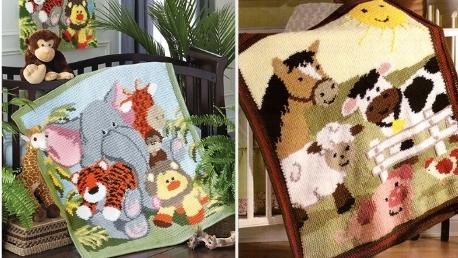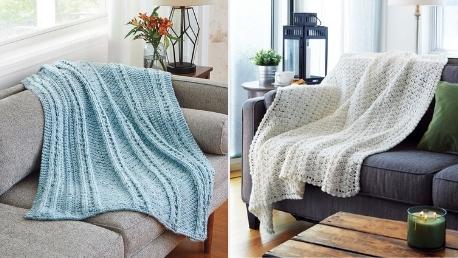5 Tips for Crocheting With Cotton Yarn

Source: Teona Swift on Pexels
Cotton is widely considered one of the go-to choices for summertime projects, as it is a light, breathable material. However, it is one of the most versatile fibres out there, making it a great choice for other types of projects as well, such as baby clothing and boots, kitchen rags, and light blankets. If you’re planning on crocheting with cotton yarn, regardless of the kind of project you’re working on, there are some tips and tricks that can make your job easier. Whether you’re a beginner crocheter or just haven’t worked with cotton in a while, read on to check out our top 5 tips for crocheting with cotton.
What to Crochet With Cotton Yarn
As we have already mentioned, cotton is one of the most versatile fibres to work with, so your options are almost endless. For instance, crochet cotton dishcloths can make for a great housewarming gift (check out our free crochet dishcloth pattern if you’re looking for ideas). Some other kitchen accessories you can try your hand at include bottle and can cozies, coasters, and pot holders.
If fashion is more up your alley, cotton is still a great choice. Cotton dresses are pretty much a summer staple in every girl’s and woman’s wardrobe. But you don’t have to limit yourself to clothing, either. This material can be used to make jewellery, hats, headbands, bags, and so much more. If you’re looking for a place to start, check out this free Jack & Hooty Treat Bag pattern (it would make a great pre-Halloween gift for kids!) or this free Summer Tote Bag pattern.
Our 5 Tips for Crocheting With Cotton Yarn
Once you’ve settled on the type of crochet cotton project you’re going with, it’s time to get down to business. Let’s take a look at our five actionable tips for making sure your final product turns out just the way you imagined it.
Choose the Right Hook Type & Size
Using the right hook for your cotton crochet project can make all the difference. Cotton fibre tends to be a little slippery, so it is important to choose a hook that will offset this. This is why you will want to use a hook with a textured surface.
Aside from the type of hook, you should also carefully pick the size of the crochet hook you will be using. The best size, however, will depend on the yarn weight you decide to go with. Which brings us to our next point.
Choose the Right Yarn for Crocheting
Not all cotton is the same. Different yarn weights will produce different results, and not all of them are appropriate for all types of projects. If you’re crocheting an item that needs to be durable but doesn’t require a lot of stretchiness (such as, for instance, these peppermint coasters), you can opt for a bulkier yarn. On the other hand, if you’re making clothing, lighter yarn should be your go-to choice.
Start With an Easy Pattern and Be Patient
If this is your first time crocheting with cotton, you might be tempted to jump straight into more complicated projects. After all, cotton offers such a wide range of items you can make, that it can be quite difficult to resist. However, you should still start small. Pick an easier pattern to begin with, such as these quick and easy coasters. Once you’re comfortable working with cotton, you can up the difficulty and move on to more demanding projects.
Textured Stitches Hold the Shape Better
Cotton isn’t exactly stretchy. However, since it gets quite heavy when wet, it can easily lose shape while drying, especially if you hang it to dry. To prevent this from happening, use textured stitches in your crochet project. This includes, for example, post stitches and puff stitches (try them out with this free puff stitch dishcloth pattern).
Properly Block Your Cotton Yarn
Blocking is the process of giving your crochet piece its final shape and ensuring it comes out exactly how you imagined it. Unlike blocking acrylic yarn, which is, more often than not, a step you can skip, blocking your cotton crochet piece is basically mandatory.
Here’s a quick step-by-step guide to wet-blocking cotton yarn:
1. Soak your cotton piece in cold water for around five minutes and occasionally stir it (very gently).
2. Drain the water and rinse the cotton until the water comes out clear.
3. Place your cotton piece on a towel. Be careful not to let it hang loose while moving it — support it from the bottom with your hand.
4. While on the towel, shape your piece by pulling at its edges (again, gently!) until you reach the desired shape.
5. Carefully roll the towel to squeeze out any leftover water.
6. Unroll the towel, place your cotton piece on a blocking mat, and secure it with rust-proof pins.
7. Let the crochet piece air dry.
The method of blocking described above is the most commonly used one, but it is not the only option. Steam-blocking is another technique you can use. All you need are some rust-proof pins, a washcloth, and a clothes iron. Simply lay your cotton piece on a flat surface, cover it with a wet washcloth, and iron over it on the cotton setting. After that, pin your piece into the desired shape and let it sit for a while.
Use a Suitable Cotton Yarn Type for Your Project
We have already mentioned the importance of choosing the right weight of cotton yarn for your crochet project. However, weight is not the only thing to take into consideration when making the decision. For instance, you should consider using cotton blends.
Cotton Blends
Cotton might have a lot of great properties, but there are also certain drawbacks to working with it. That is why cotton blends are a great alternative to using 100% cotton. For instance, adding acrylic fibre to cotton will make it softer and more flexible, making this blend a good option for summer garments. Some good acrylic cotton blends to work with include Bernat Softee Cotton Yarn and Premier Cotton Fair Yarn. On the other hand, wool and cotton mixes are a great choice for winter clothes, as wool provides an additional level of comfort and warmth.
Mercerized Cotton
Mercerized cotton, as the name suggests, is cotton that has undergone the process of mercerisation. This process ensures that the colour of the fibre is more vibrant, as well as that the fibre is more durable and maintains its shape for longer. For this reason, mercerized cotton is a good option for your cotton project, especially if you don’t have a lot of experience working with this yarn. Some good mercerized cotton yarns to consider include Lion Brand 24/7 Cotton Yarn and Circulo Anne Yarn.




